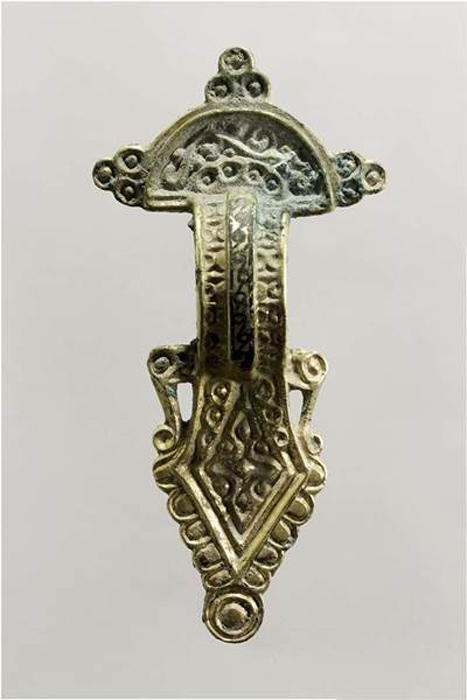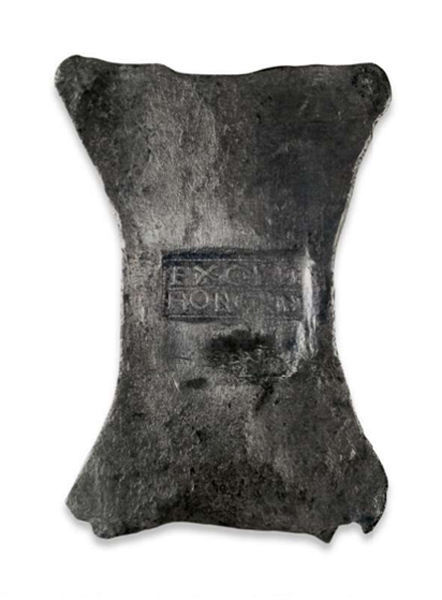
Massive Illegal Roman-era Silver Site Discovered In Britain
Archaeologists in England have discovered a monumental ancient building. Not only was this the burial site of a powerful female clan leader, but it represents the largest illegal silver production or smithing site in the Roman Britain era.
The ancient crypt was discovered in 2005 at Grange Farm, in Gillingham, Kent, England. Archaeologists inspecting the site prior to a house-building project discovered two iron spearheads, which subsequently launched a 15-year research project that has resulted in the recovery of 453 Roman coins, 20,000 fragments of pottery weighing 259 kilograms (571 pounds), and 8,000 animal bones.
Now, the researchers have announced that they have amassed 15 kilos (33 pounds) of “litharge,” which is the largest amount ever to be uncovered at a Roman Britain site. Litharge is a secondary lead oxide by-product of silver extraction, which forms from the oxidation of galena ores. This 15-kilo haul suggests a Roman period clan was making illegal silver, behind closed doors, and away from the watchful eyes of Roman tax officials.

A 6th century silver gilt brooch found at the illegal silver making site from the Roman Britain period. (Pre Construct Archaeology)
Illegal Silver Production And Iron Age Roman Elites
The iron spearheads determined that Grange Farm was occupied around 100 BC during the Late Iron Age in Britain. The excavations showed that in the Roman Britain period metal extraction occurred at one end of a building while fireplaces were installed at its center, and at the other end evidence was found of “high status domestic use.” Further suggesting elite usage, a gold chain was also found strewn amongst the rubble of the mausoleum that was decorated with carefully faceted variscite beads.
- Roman Fort Discovered Hidden Beneath English Bus Station
- Artifact Reveals People Were Fed To Lions In Roman Britain
A report in the Daily Mail says the researchers think a large clan were working farm land, raising animals and hunting. But they were also secretly making illegal silver. At the height of Roman rule in their colony of Britannia, between the 3rd and 4th centuries AD, gold and silver were the standards of the island economy.
The Romans introduced the gold aureus for large payments, which had a fixed value of 25 silver denarii until at least 200 AD. This coin was the main coin of value in general use, thus, it was a key player in imperial taxation. And this is why the investigators at Grange Farm believe the silversmithing at the site “may have been done illicitly.”

An officially stamped Roman British silver ingot, produced between the 4th and 5th centuries AD, weighing 353 grams (0.78 pounds). The stamped inscription reads EX OFFE HONORINI, which translates "from the workshop of Honorinus." It was found in 1777 with two gold coins of Emperor Arcadius and one of Honorius, and dates to the end of the Roman period in Britain. (© Trustees of the British Museum)
A Roman Period Silversmithing Site, With A Mystery
Dr James Gerrard, senior lecturer in Roman Archaeology at Newcastle University said, exactly why the people were refining silver from silver-rich base metal alloys remains “a mystery.” Furthermore, he says the clan were “probably not” minting silver coins. He reached this conclusion because tests performed on bronze coinage had too little silver in the alloy. “Maybe they were making silver objects like the ingots in the Canterbury Treasure,” suggested Dr Gerrard.
The professor believes the site was a 3rd or early 4th century mausoleum, a storage house for the dead, which was originally built in stone with a tile roof. A reddish tessellated pavement of plain mosaic was discovered outside the building that is described as being “really unusual for Roman Britain.” The site remained inhabited in the Roman period, and it evolved until the 5th century AD, and sometime after that it was abandoned.

The Grange Farm dig produced considerable evidence of high end silversmithing including this Saltern Hearth with a group of fired clay pedestals. (Kent Online)
An Elite Silversmithing Female Clan Leader
The investigators discovered a lead coffin at the site containing the body of a middle-aged to elderly woman who is thought to have been a local clan chief. The researchers say she had “quite a hard life,” which was evident in the discovery of her having suffered osteoarthritis. However, being of high status she had access to good quality foods and lived a relatively long life. A “two-story house” sized monument was also discovered at the site which enhances the notion that the woman was of a very high-social status.
- Roman Slave of Britannia, Shackled, And Thrown In A Ditch To Die
- New Date for Chedworth Roman Villa Mosaic Changes English History
Dr Gerrard said that during the 5th century the woman’s grave was disturbed but the actual building stayed intact until the Norman Conquest. This was determined after the discovery of tawny owl pellets, which informed the researchers that after the Romans left Britain the mausoleum was abandoned somewhere between the 5th and 10th century. The site was left untouched by the Anglo-Saxons who Dr Gerrard suspects may have used it as a navigational structure in the late 5th century.
Top image: The coffin of the high-status elite Roman Britain clan leader, who may have also been a major maker of illegal silver that the Romans couldn’t tax. Source: Pre Construct Archaeology
By Ashley Cowie
















Comments
So even way back then people didn’t always strictly follow laws and rules. Would you call that human nature? Anyhow, very interesting how they came to that conclusion. Maybe the ‘best’ crme ever, if it took 1500 years to discover it.